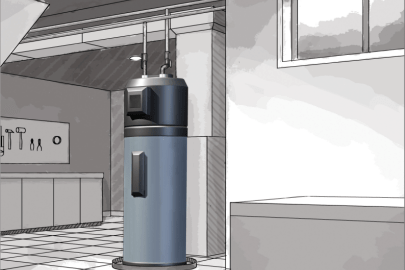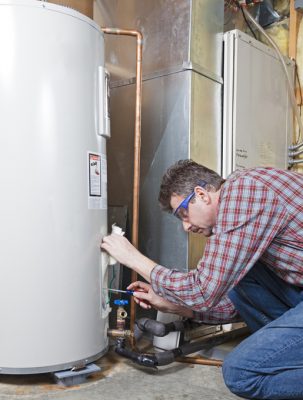Effective Techniques for Maintaining Your Home's Hot Water System
Effective Techniques for Maintaining Your Home's Hot Water System
Blog Article
Just about everyone may have their personal way of thinking about What Kind of Maintenance Do Water Heaters Need?.

Hot water is crucial for day-to-day comfort, whether it's for a rejuvenating shower or washing meals. To ensure your hot water system runs effectively and lasts longer, normal maintenance is crucial. This write-up gives useful tips and understandings on how to keep your home's hot water system to stay clear of interruptions and expensive fixings.
Introduction
Maintaining your home's hot water system could seem complicated, but with a couple of basic steps, you can guarantee it operates efficiently for many years to come. This guide covers whatever from comprehending your hot water system to do it yourself upkeep tips and knowing when to call in expert assistance.
Relevance of Maintaining Your Hot Water System
Regular maintenance not only prolongs the lifespan of your hot water system yet additionally guarantees it runs effectively. Disregarding maintenance can lead to reduced efficiency, higher energy bills, and also premature failure of the system.
Indicators Your Hot Water System Needs Maintenance
Recognizing when your hot water system needs focus can prevent significant concerns. Keep an eye out for indications such as inconsistent water temperature level, strange noises from the heating system, or rusty water.
Recognizing Your Hot Water System
Before diving into upkeep tasks, it's handy to recognize the fundamental components of your warm water system. Commonly, this consists of the water heater itself, pipelines, anode poles, and temperature controls.
Month-to-month Maintenance Tasks
Routine month-to-month checks can assist catch small issues prior to they escalate.
Purging the Water Heater
Flushing your hot water heater eliminates debris buildup, improving efficiency and extending its life.
Monitoring and Changing Anode Rods
Anode poles protect against corrosion inside the tank. Examining and changing them when broken is vital.
Evaluating and Changing Temperature Setups
Changing the temperature setups makes certain ideal performance and safety and security.
DIY Tips for Upkeep
You can do several maintenance tasks on your own to keep your hot water system in top condition.
Checking for Leaks
Consistently inspect pipelines and connections for leaks, as these can cause water damage and higher expenses.
Checking Pressure Relief Valves
Examining the pressure safety valve guarantees it operates properly and protects against too much stress accumulation.
Shielding Pipelines
Insulating warm water pipes minimizes heat loss and can conserve energy.
When to Call a Specialist
While do it yourself upkeep is valuable, some problems require professional competence.
Complicated Problems Requiring Professional Help
Instances consist of major leakages, electrical issues, or if your hot water heater is constantly underperforming.
Routine Specialist Maintenance Conveniences
Specialist maintenance can consist of detailed assessments, tune-ups, and guaranteeing compliance with safety and security criteria.
Verdict
Regular maintenance of your home's hot water system is necessary for effectiveness, longevity, and price financial savings. By complying with these tips and recognizing when to look for expert help, you can guarantee a trusted supply of warm water without unanticipated interruptions.
How to Maintain an Instant Hot Water Heater
Before tinkering with your hot water heater, make sure that it’s not powered on. You also have to turn off the main circuit breaker and shut off the main gas line to prevent accidents. Also turn off the water valves connected to your unit to prevent water from flowing into and out of the appliance. 2. When you’re done, you have to detach the purge valves’ caps. These look like the letter “T†and are situated on either side of the water valves. Doing so will release any pressure that has accumulated inside the valves while at the same time avoid hot water from shooting out and burning your skin. 3. When the purge valves’ caps are removed, you have to connect your hosing lines to the valves. Your unit should have come with three hoses but if it didn’t, you can purchase these things from any hardware or home repair shops. You can also get them from retail stores that sell water heating systems. Read the user’s manual and follow it to complete this task properly. When the hosing lines are connected, open the purge port’s valves. 4. You should never use harsh chemical cleaners or solutions when cleaning your unit. Make use of white vinegar instead. It should be undiluted and you’ll probably use about 2 gallons. 5. Now flush your water heater. This task should probably take about 40 minutes. We can’t give you specific directions for this because the procedure is carried out depending on the type, model and brand of your heater. With that being said, refer to the user’s manual. 6. When you’re done draining the unit, you have to turn off the purge port valves again. Remove the hosing lines that you earlier installed on each of the water valves. Put the valve caps (purge port) back in their respective places and be very careful so as not to damage the rubber discs that are found inside these caps. 7. Now that everything’s back in place, check your user’s manual again to find out how to reactivate your water heating system. 8. Once it is working, turn one of your hot water faucets on just to let air pass through the heater’s water supply pipes. Leave the tap on until water flows smoothly out of it. https://www.orrplumbing.com/blog/2014/september/how-to-maintain-an-instant-hot-water-heater/

Do you like reading about Tips on Maintaining a Water Heater? Write a comment down below. We will be pleased to hear your ideas about this blog. We hope that you visit us again before long. Sharing is good. You just don't know, you may very well be helping someone out. Thank you for going through it.
Visit Report this page